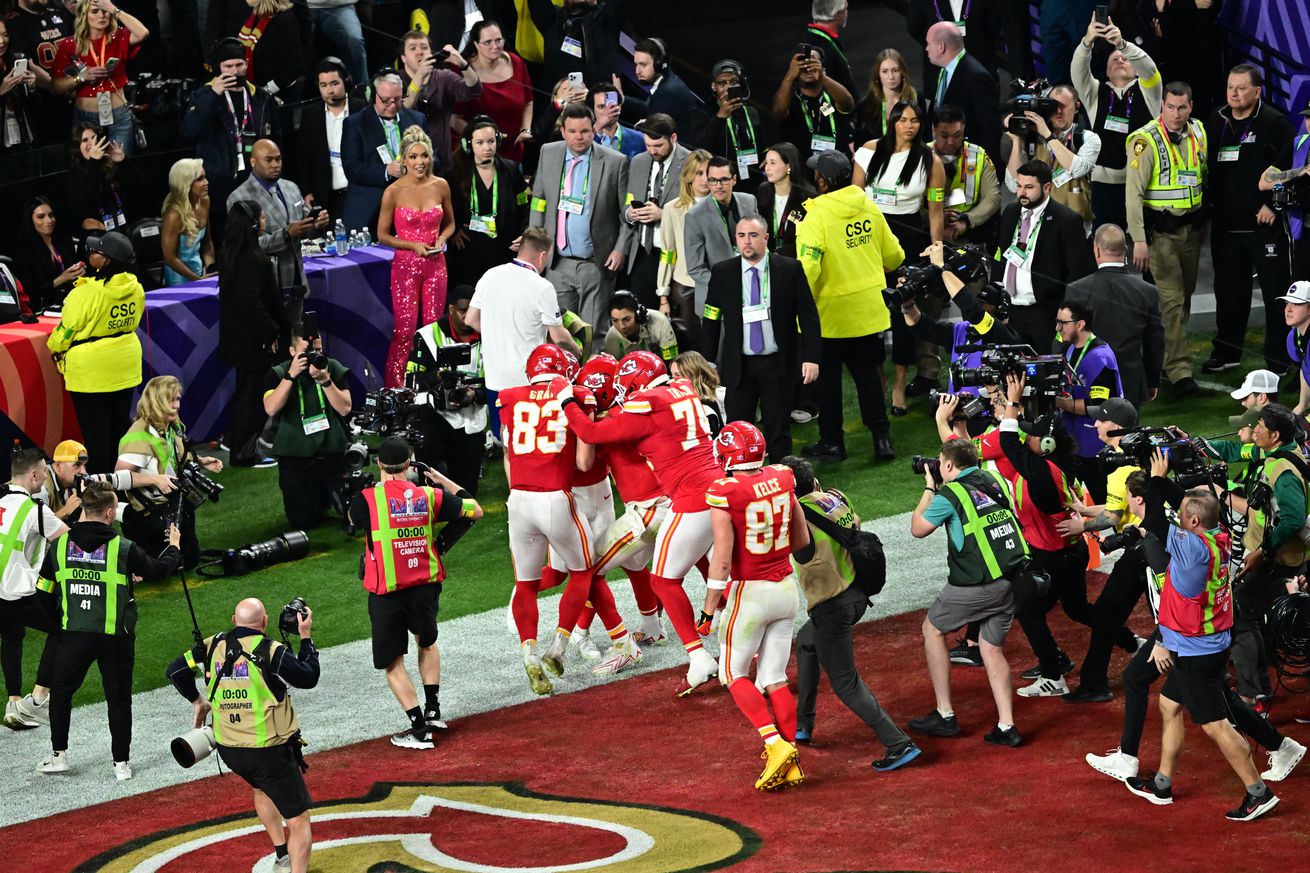Set Number: X164497 TK1
Remember when Super Bowls were regularly blowouts? Those days may be over.
For a third consecutive season, the Super Bowl was decided by exactly three points, with the winning score coming inside the final two minutes of regulation or overtime. The Kansas City Chiefs’ dramatic 25-22 win over the San Francisco 49ers may have been a bit of a slow-burner and at times sloppy, but the latter stages of the third quarter through overtime played out like a classic 15-round heavyweight boxing match. The reigning champions were repeatedly in trouble on the ropes, but still landed the knockout punch to remain atop the NFL throne.
Did we just witness one of the most thrilling Super Bowls ever? I’d say so. Was it the absolute greatest? Probably not. But as fans, we’ve been been pretty damn spoiled over the past couple of decades.
The 21st century Super Bowls have almost exclusively been close games
Photo by: Tom Hauck /Getty Images
The first Super Bowl of the 2000s was the St. Louis Rams defeating the Tennessee Titans by literally a yard. Mike Jones’ championship-winning tackle on Kevin Dyson is one of the game’s most iconic plays in American sports. It’s no longer even the most incredible Super Bowl ending decided at the 1-yard line.
Over the last 25 Super Bowls:
21 have been within a one-possession score margin at some point in the 4th quarter.
15 were decided by no more than eight points.
16 had the winning points scored in the 4th quarter or overtime.
Only four were won by more than 14 points.
Of the 10 Super Bowls decided by three points or fewer, eight of them have occurred since 2000. Blowouts like the Seahawks’ 43-8 smashing of the Broncos, the Ravens humiliating the Giants 34-7, and the Buccaneers blowing out the Raiders and Chiefs 48-21 and 31-9 respectively are now the exception, not the norm.
Of course, not every close game is a good or particularly memorable game (see: Patriots 13, Rams 3), and not every good game necessarily has a close final score. The New Orleans Saints beat the Indianapolis Colts 31-17, but the Saints trailed 17-16 with under six minutes to go before scoring the final 15 points in a two-minute span.
The 20th century Super Bowls? Not a lot of competitive football.
We revere legendary dynasties like the 1970s Steelers, the 1980s 49ers, the 1990s Cowboys, great teams like the 1985 Bears and 1972 Dolphins, and historically important teams like the 1969 Jets. The actual championships were generally not competitive, even if there were iconic plays or moments within those games.
Of the first 33 Super Bowls:
The average winning margin was 16.2 points, nearly double the 9.84 point average margin from this century’s Super Bowls.
Roughly half (17) of the winning teams never trailed.
13 teams entered the 4th quarter with 16+ point leads.
Just seven games had the winning points scored in the 4th quarter.
There was a five-year span from 1984 to 1988 in which NFC teams swept the AFC competition by a combined score of 203-65. The NFC would win 13 straight Lombardi Trophies.
No consecutive Super Bowls were decided by one possession.
The only 10+ point comeback was Washington turning an early 10-0 hole against the Broncos into a 42-10 romp. There have been six comebacks of at least 10 points since 2009.
A whole lot of super snoozers involving some of the best teams and players of all-time.
Is it randomness? Or something more?
It is probably not coincidental that the majority of the closest Super Bowls have come after the salary cap and current free agent rules were implemented in the early 1990s. There’s greater difficulty to retaining the most important players for longer periods of time. In a sense, while the cap and free agency era isn’t fully eradicating dynasties, the gap between the best team and the rest of the league is not as wide as, say, when Joe Montana’s 49ers could hammer squads quarterbacked by Dan Marino 38-16 and John Elway 55-10.
Continually evolving game rules have overwhelmingly benefited the offense and boosted scoring opportunities. Twenty of the 25 highest scoring seasons in the Super Bowl era have come in this century. In-game strategy has also understandably shifted toward pass-heavy play-calling, where quarterbacks and receivers enjoy a tremendous advantage over defenses. We’re seeing more 4th down aggressiveness from head coaches, which can lead to longer drives, fewer possessions, and more close games.
Whatever the reason(s), the sample size seems large enough to conclude that the nearly annual forgettable Super Bowls are a thing of the past.
Or maybe the script writers have just gotten a lot better at their jobs…













